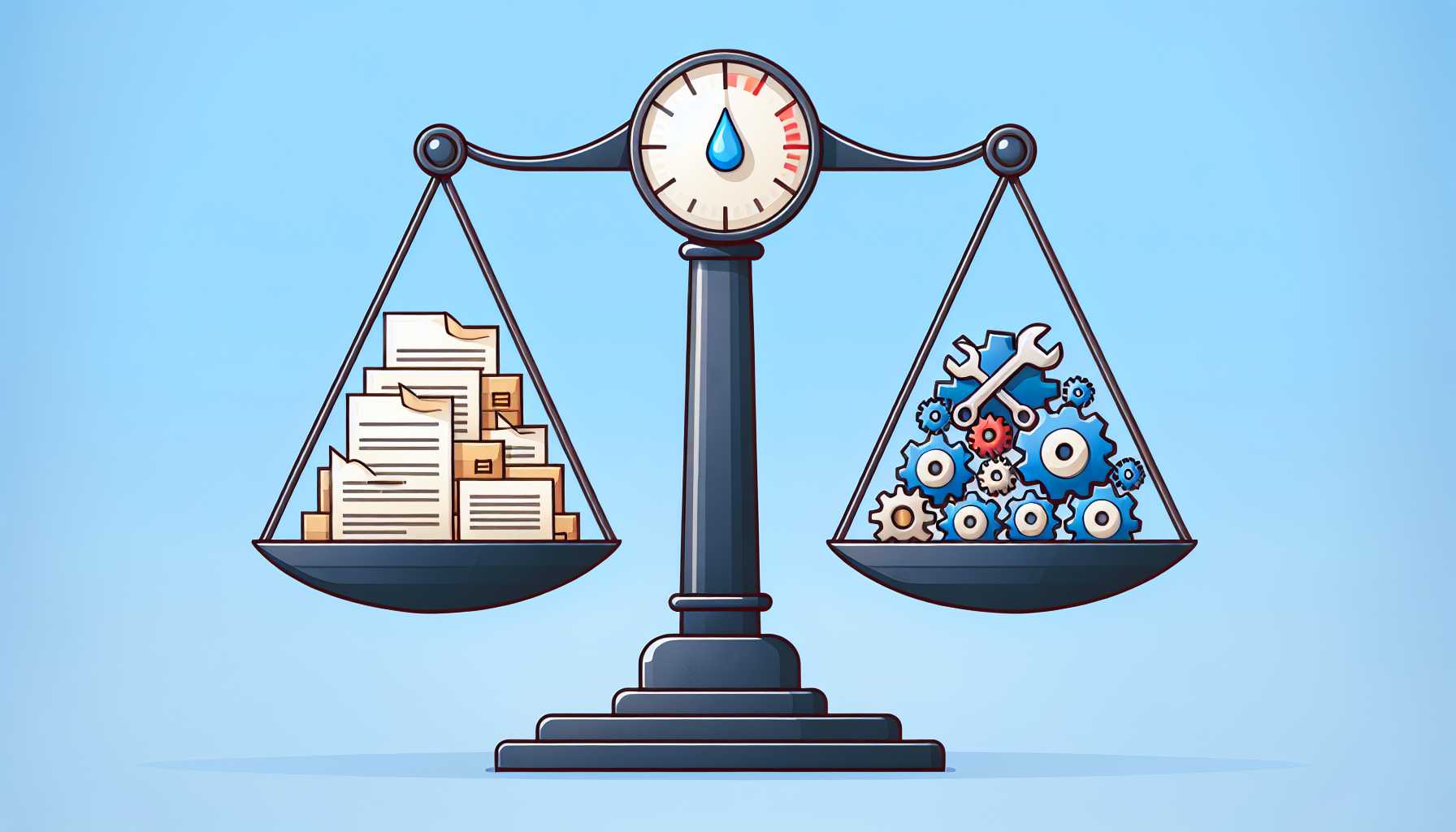Introduction
The tug-of-war between expanding a product’s feature set and managing the underlying technical debt is a saga familiar to any seasoned product manager in tech. Managing this delicate balance is akin to performing a high-wire act where the safety net is made of ever-changing customer expectations and technological advancements. Here, I will delve into strategies I’ve honed over years of leading software projects—guiding principles that help maintain this balance without compromising product integrity or innovation.

Understanding Technical Debt
Let’s start by demystifying technical debt. It’s incurred when a less-than-optimal technical solution is accepted, often to hit a deadline or pivot quickly. While this allows for rapid progress, it can stack up, compromising the codebase’s integrity and potentially causing long-term slowdowns. One particular product overhaul I led stands out. Technical debt had accrued to a point where new feature development was almost impossible. We had to take drastic measures to refactor significant portions of the code, reinforcing the lesson that unchecked technical debt can bring innovation to a standstill.
A Framework for Balance
Developing a strategy to offset technical debt without stalling new features is vital. To achieve this, I’ve structured a ‘Balance Framework’ that aids in navigating these decisions.
1. Make Technical Debt Visible
Transparency about technical debt is key. In a past project, we started visualizing technical debt items alongside new features on our roadmap. This made the debt tangible and helped stakeholders understand why certain refactoring was necessary before we could introduce new functionalities.
2. Prioritize Ruthlessly
As with feature development, prioritizing technical debt items is essential. Use a risk-reward model to determine which technical debts pose the greatest threat to future development and tackle them accordingly. I recall categorizing technical debts based on their impact on our delivery speed and system stability, which clarified our refactor roadmap.
3. Allocate Dedicated Time
Dedicating regular time slots for technical debt reduction prevents it from being perpetually sidelined. One approach I’ve used effectively is the concept of “Debt Sprints,” where every few sprints, we’d exclusively address tech debts. This method ensured that our codebase stayed healthy without derailing ongoing feature work.
4. Embrace Automated Testing
Automated testing can be a game-changer. On one of my teams, we established a comprehensive automated test suite that reduced our technical debt by catching issues before they compounded. This not only stabilized the codebase but also accelerated feature release cycles.
5. Encourage a Quality Culture
Instilling a culture that values quality as much as innovation can have a profound impact. Promoting best practices, such as code reviews and pair programming, was a transformative experience in my career. It rallied the team around the idea that accruing less debt would mean more room for exciting feature work.
The Technical Debt Dilemma: A Case Study
One of my most memorable product challenges was with a cloud-based analytics platform. The product had massive potential, but technical debt was a constant barrier. We developed a ‘debt repayment’ plan that combined refactoring with feature development in a balanced pace, allowing us to steadily improve the product while continuing to meet our users’ needs.
Final Thoughts
Balancing technical debt with feature development demands constant vigilance and a strategic approach. Leveraging frameworks like the ‘Balance Framework’ and infusing your team culture with quality-minded principles can make this balance attainable. In the end, effective management of technical debt isn’t about making everything perfect—it’s about making the product better, more sustainable, and ready for the future of innovation.
